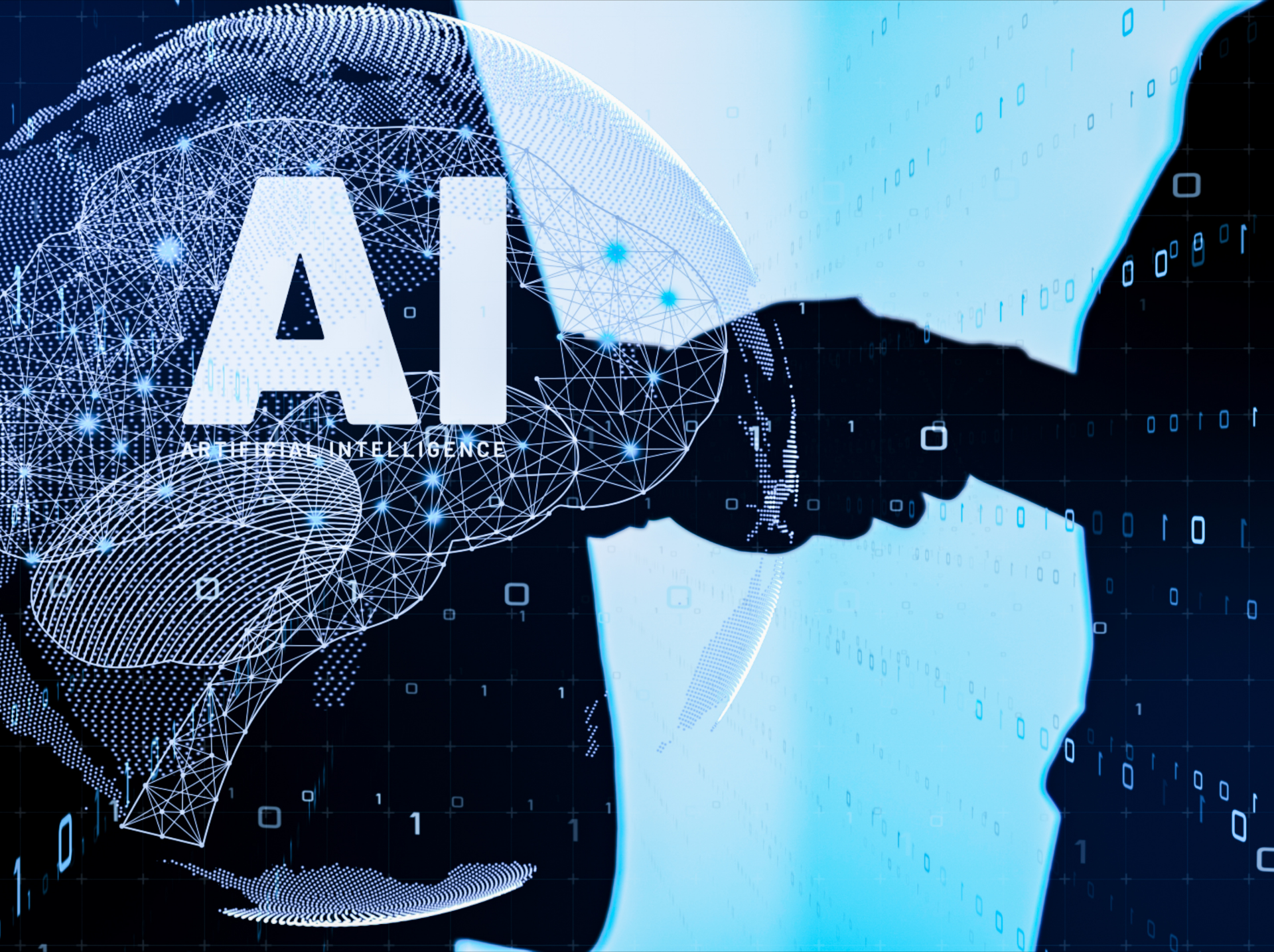Agentic AI vs AI Agents: Key Differences Between Them

Imagine if AI could think for itself and take actions to achieve goals without needing someone to be its constant guide. That’s what agentic AI can do! Unlike regular AI that just responds to your commands, agentic AI plans ahead, learns from what it does, and adapts along the way.
It can handle tasks that, until now, would need human help at every turn. Check out this blog to explore the key differences between agentic AI and AI agents.
What is AI Agent?
An AI agent is a software entity designed to perceive its environment, interpret information, and autonomously perform tasks from data collection to complex decision making while operating within defined rules and objectives.
Unlike general AI systems, agents focus on specific tasks with clear goals and limits. They usually follow set rules, though newer agents can learn to improve over time. An AI agent has three key functions:
-
Perception: Which is the collection of information
-
Processing: Interpreting the accumulated information
-
Action: Making decisions based on its data-backed interpretations
These functions help the agent complete its tasks and behave predictably.
What is Agentic AI?
Agentic AI refers to AI systems that don’t just follow instructions they act with autonomy, purpose, and adaptability. These intelligent agents can perceive their environment, reason through complex situations, make decisions, and take proactive steps toward achieving specific goals.
Unlike traditional AI tools that wait for human input, agentic AI takes initiative, learns from outcomes, and continuously refines its actions operating like a self-driven problem solver within defined boundaries.
Core Differences between Agentic AI & AI Agents
| Aspect | Agentic AI | AI Agents |
|---|---|---|
| Autonomy | High degree of self-direction; can independently determine goals and methods | Operates within predefined frameworks; follows programmed objectives |
| Decision Making | Can reason about abstract concepts and make complex judgments | Typically makes decisions based on specific algorithms and rules |
| Scope | Broader capability to handle diverse tasks across domains | Usually specialised for specific functions or environments |
| Learning | Continuous learning across experiences; transfers knowledge between domains | Learning often confined to specific task improvement |
| Planning | Can develop multi-step strategies with contingencies | May have limited planning capabilities restricted to defined scenarios |
| Implementation Complexity | Agentic AI implementation requires sophisticated architectures and significant resources | Implementation can be simpler with focused functionality |
| Human Interaction | Can understand nuanced instructions and provide reasoning | Interaction usually follows structured patterns |
| Resource Requirements | Typically demands substantial computing power and data | Can operate with more modest resource allocations |
| Risk Profile | Higher agentic AI and AI agents risks due to unpredictability and autonomous decision-making | More predictable behaviour with contained risk boundaries |
| Evolution Capability | Can adapt to entirely new situations without reprogramming | Adaptation usually limited to predefined parameters |
5 Types of AI Agents
Becoming more familiar with the different types of AI agents helps you see how they work and where they excel, giving you an idea of where each AI is applied best:
1. Reactive (Simple Reflex) Agents
Reactive agents respond instantly to their current environment using straightforward “if-then” rules. They don’t store past data or plan ahead, making them ideal for simple, repetitive tasks like thermostat control or basic customer support chatbots.
2. Deliberative Agents
Deliberative agents think before they act. They use past data and future projections to plan their actions, making them suitable for complex scenarios like logistics, virtual assistants, or any task that requires multi-step decision-making.
3. Learning Agents
Learning agents improve over time by analyzing feedback and adjusting their behavior. They don’t rely on fixed programming, which makes them great for dynamic systems like recommendation engines, self-driving cars, or fraud detection tools.
4. Goal-Based Agents
Goal-based agents evaluate different options based on how well they help achieve a defined goal. They don’t just react—they choose actions that move them closer to their objective, which makes them useful in games, robotics, and intelligent planning systems.
5. Model-Based Agents
Model-based agents maintain an internal model of the world, allowing them to infer what’s happening even when data is missing. This helps them make smarter decisions in uncertain environments, such as simulations, diagnostics, or smart navigation tools.
3 Widespread Agentic AI and AI Agent Use Cases
These technologies have real-world applications that show their strengths. Exploring the depths of these examples can help you choose the best approach for your needs.
1. Enterprise Decision Support
In enterprise environments, AI agents are used to process structured business data within predefined rules. They generate reports, highlight KPIs, and respond to specific queries efficiently but only within the scope they've been programmed for.
In contrast, Agentic AI offers a more dynamic layer of intelligence. It actively analyzes business data across multiple departments, even when information is incomplete or unclear.
These systems can explore various potential outcomes simultaneously, identifying trends and patterns that human analysts or traditional tools might overlook. The result is faster, more strategic decision-making that adapts to changing market conditions in real time.
2. Customer Service Automation
In customer service, AI agents handle high volumes of routine inquiries such as FAQs, order tracking, or simple troubleshooting. They operate within fixed response frameworks and escalate non-standard cases to human support.
On the other hand, Agentic AI systems are capable of understanding context, interpreting user intent, and crafting tailored responses on the fly. Rather than following a script, they think through problems, even ones they haven’t encountered before, and generate appropriate solutions.
This leads to faster resolution of complex cases and a significant boost in customer satisfaction especially when dealing with unique, emotionally nuanced, or high-stakes interactions.
3. Research and Discovery
In research roles, AI agents typically automate data gathering and literature reviews. They work within established structures, retrieving and organizing information based on preset parameters. While effective for streamlining repetitive tasks, their creative capacity is limited.
Agentic AI, by contrast, approaches research like a human collaborator it forms hypotheses, suggests new methodologies, and even draws connections between seemingly unrelated fields.
These systems can propose unexpected insights, pushing the boundaries of innovation. Looking ahead, the synergy between AI agents for groundwork and Agentic AI for creative problem-solving is set to accelerate breakthroughs in fields like science, medicine, and technology.
Which to Choose When: Decision Matrix
| Business Need | Choose Agentic AI When | Choose AI Agents When |
|---|---|---|
| Task Complexity | Problems require creative problem-solving and novel approaches | Tasks are well-defined with clear procedures and boundaries |
| Resource Availability | You can invest in substantial computing infrastructure and development | Budget and technical resources are limited |
| Time Sensitivity | Long-term value outweighs immediate implementation needs | Quick performance is critical with acceptable performance levels |
| Risk Tolerance | Your application can accommodate some unpredictability for greater capability | Predictable, consistent behaviour is essential |
| Problem Domain | Issues span multiple knowledge areas requiring integrated reasoning | Problems are domain-specific with established solution patterns |
| Human Oversight | Continuous supervision is available during development and operation | Minimal oversight is available after initial deployment |
| Adaptability Needs | Environment changes frequently requiring continuous adaptation | Operational conditions remain relatively stable over time |
| Scale of Operation | Managing complex systems with numerous interdependent variables | Handling high volumes of similar, well-structured tasks |
| Implementation Timeline | Agentic AI implementation timeframe can accommodate longer development cycles | Rapid deployment is essential with incremental improvements |
| Future Challenges | Anticipating agentic AI and AI agents challenges that require novel solutions | Facing known challenges with established mitigation strategies |
Conclusion
The difference between agentic AI and AI agents is more than just technical language; rather it reflects real differences in capabilities, uses, and impact. While the boundaries may blur as AI advances, their core characteristics will likely remain separate.
The choice between them should fit your business needs, resources, and long-term strategy. Instead of seeing one as the better alternative, think of them as complementary tools for your digital transformation.
As businesses navigate this change, partnering with the right growth team is just as critical as the technology itself. Teams like GrowthJockey step in, merging smart business strategy with intelligent execution to fuel scalable, future-ready growth.
Reach out to see how GrowthJockey AI Consulting can help with your next growth phase.
Agentic AI vs AI Agents FAQs
1. What is the difference between agentic AI and agent based AI?
The main difference between agentic AI and AI agents is how much freedom they have and their scope. Agentic AI sets its own goals and methods, while agent-based AI works within specific frameworks to perform tasks. Agentic systems reason across various areas, while agents focus on particular tasks.
2. What is the difference between assistive AI and agentic AI?
Assistive AI only responds when you ask it for help, following instructions to assist you. Agentic AI, however, takes a more proactive approach. It anticipates needs, plans ahead, and acts without needing constant direction. While assistive AI is just a tool, agentic AI becomes a true partner, working alongside you to achieve your goals.
3. What is the difference between Agentic and Agentive?
There is a small difference between both. "Agentic" means the AI is free to make decisions and act on its own, without depending on its design. "Agentive" means the AI works as an agent within a particular environment, responding to its surroundings.
4. What is the difference between Gen AI and Agentic AI?
Generative AI specialises in creating content (text, images, code) based on patterns learned from training data but generally lacks autonomous decision-making capabilities. Agentic AI extends beyond generation to include planning, goal-setting, and independent action execution.
While Gen AI produces outputs in response to prompts, agentic systems can identify needs, formulate strategies, and take initiatives without explicit instructions for each step in the process.








